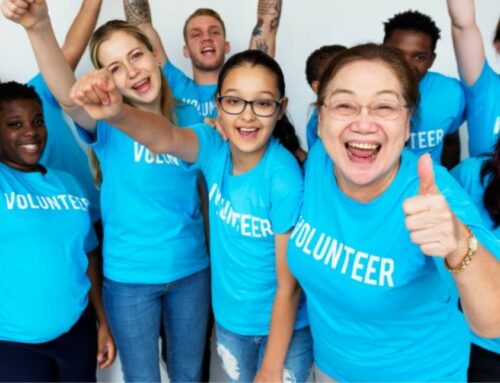
Creative Volunteer Recruitment Ideas for a Complex World
It’s a challenge to be heard in our noisy world, so it’s imperative to think about creative volunteer recruitment ideas that will continue to drive people to support your organization. This can be further compounded if your information is hard to sift through or the volunteer application process too complicated.
Unfortunately, today’s audiences aren’t willing or able to spend the time.
It appears that more and more people are outsourcing their decision-making to others. Companies like Blue Apron, Hello Fresh, Stitch Fix, and Trunk Club have capitalized on this and are offering consumers the chance to opt-out of planning, whether it be what’s for dinner or what they’ll wear to work tomorrow. And, the business model appears to be sustainable.
It’s a fascinating phenomenon I call the “kit culture.”
Concurrent Consumer Contradiction — Fatigue and Energy
Overwhelmed with the pressures of high-paced daily life, people simply can’t be burdened to make conscious, deliberate decisions.
Others have flagged this current state of communal fatigue. Futurist Faith Popcorn has coined the term “FutureTense” to describe our current state of unease and indecision. Her Trendbank defines this as, “consumers, anxiety-ridden by simultaneous social, economic, political and ethical chaos, find themselves beyond their ability to cope with today or imagine tomorrow.”
At the same time, Popcorn has also noted a cultural phenomenon that may well counter this collective paralysis. She calls it “Save Our Society,” where “the country rediscovers a social conscience of ethics, passion and compassion.”
Certainly, we’ve experienced a global eruption of citizen engagement. But, has this infectious energy translated into community volunteer support beyond marches and political campaigns? Or are people experiencing widespread compassion fatigue?
It’s hard to say for sure.
The last data we have on volunteering rates in the US is nearly three years old. And there is no sign from the Corporation for National & Community Service that they will fund another census supplement to track volunteering rates and make them available to the public.
Aligning Volunteer Recruitment With the New “Kit Culture”
If communities are indeed energized, how can we make it easier for overwhelmed people to act on their social conscience? How can we offer clear, compelling messages and easy inroads to those who want to help us?
I believe the “kit culture” has some valuable lessons to share.
If the public has barriers that prevent arriving at a conclusion, we may need to help. One way is by better organizing information to help volunteers choose how to get involved (availability, interests, timeframe, etc.). By paying closer attention to how we organize and communicate information, we can decrease the cognitive burden of decision-making.
In addition, by creating “Bento-box” offerings that are comprised of a variety of pre-packaged projects & “deliverables” we can speak the language of our volunteers, specifically younger volunteers, in terms they can understand.
Currently, more than one in three U.S. workers are freelancers. According to recent industry research, 47 percent of Millennials are freelance, more than any other generation in history. The rise of the freelance workforce is expected to continue, and experts say they will become the majority of the US workforce in less than a decade.
Those who are accustomed to working on a contract basis, are used to thinking in terms of projects and deliverables. Volunteer-involving organizations would do well to learn how to align their opportunities with a paradigm that is clearly understood by this unique talent pool.
By offering training, projects, and other opportunities in an easy to access “kit,” organizations can help prospective volunteers select the opportunity that best fits their lifestyle, onboard, and become active more quickly.
Even something as simple as clarifying ways to get involved and to give–as Southeastern Guide Dogs has done with their website drop-down menus–gives volunteers a more simple way to navigate the options.
For too long, organizations have assumed that volunteers are willing and able to wade through a quagmire of dry, lifeless information about opportunities to serve. In today’s world brevity is king, and those who don’t evolve will certainly perish as the future of work changes in front of our eyes.







Leave A Comment